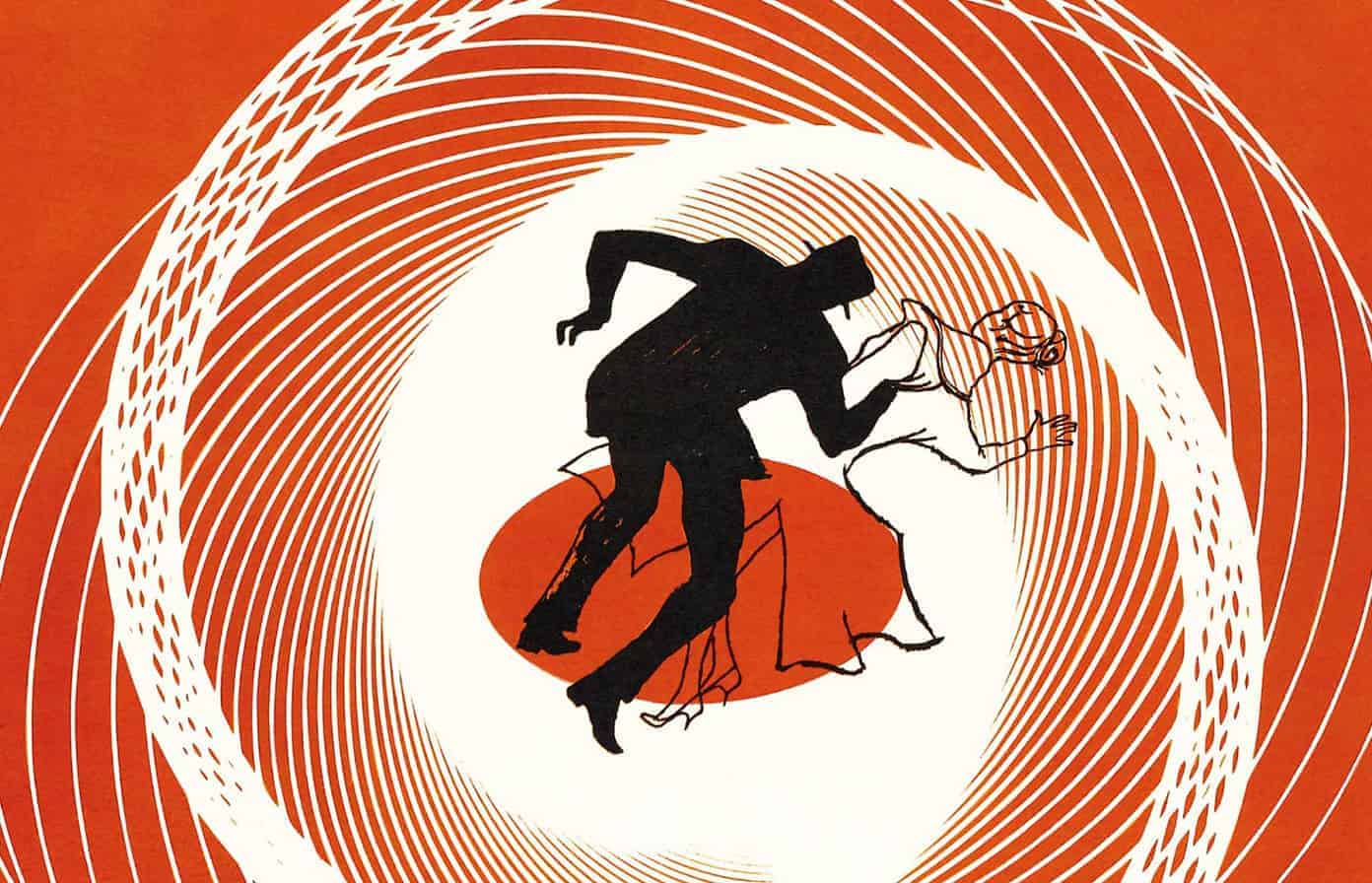Having Vertigo: What to Do and When to See a Doctor
What to do when experiencing vertigo. When to see a doctor for vertigo symptoms. Remedies and treatments for vertigo. Exercises to help with vertigo.
Understanding Vertigo
Vertigo is the sudden sensation of losing balance, accompanied by the feeling of looking down from a great height. It can also make you feel like you are spinning or that the room around you is spinning. Vertigo attacks can last for a few seconds or persist for a couple of hours and even days.
Vertigo is considered a symptom, not a condition, and has been associated with ear infections like Benign paroxysmal positional vertigo (BPPV), Meniere’s disease, and vestibular neuritis. While these diseases are different, they affect the ear in a similar way by throwing off the brain’s sense of balance.
Around 30% of people will suffer vertigo at least once in their lives, and it’s a very frequent symptom in emergency patients. Thankfully, most vertigo symptoms can be treated successfully.

Remedies and Treatments for Vertigo
If you’re experiencing a vertigo attack, the best thing to do is lie down in a quiet, dark room, close your eyes, and take deep breaths. This may help ease any nausea symptoms and reduce the sensation of spinning. It is also important to avoid stressful situations because anxiety and anger can make vertigo symptoms worse.
Vertigo is most commonly treated with simple exercises or procedures. It is recommended that you perform these exercises with a trained physician or after consulting with a doctor.
Exercises for Vertigo
- Epley Maneuver: This maneuver, also known as the Canalith Repositioning Maneuver, is the most common exercise to address vertigo, specifically BPPV. This easy procedure can be done by yourself at home.
- Gufoni Maneuver: This maneuver provides a quick and effective counter to the effects of vertigo.
- Semont Maneuver: The Semont-Toupet maneuver is similar to the Epley maneuver, but it requires less neck flexibility.
- Zuma Maneuver: The Zuma maneuver is a recently developed exercise that has also been shown to be effective against vertigo.
Preventing Vertigo Attacks
While the above maneuvers address vertigo and related symptoms while they are happening, the following activities and considerations may help you prevent vertigo attacks:

Yoga
Yoga can help you regain balance, focus, coordination, and movement—and can help train the brain to counteract the effects of vertigo. Simple positions like Child’s Pose or Corpse Pose combined with deep, regular breaths can calm the body and mind. By reducing anxiety, yoga and deep breathing could prevent vertigo attacks in some people.
Hydration
Dehydration is detrimental to the body, and it can cause vertigo symptoms to flare. Make sure that you drink plenty of water throughout the day. Be aware of situations where you are losing more water than normal, like at the gym or outside on a hot summer day.
Vitamin D Deficiency
One study suggested that people who suffer from vertigo could have a deficiency of vitamin D. While more research needs to be done to confirm the correlation, this study did show that patients who were given vitamin D supplements stopped having vertigo attacks.
When to See a Doctor
You should seek medical advice if vertigo symptoms persist for a significant period or if they are severe enough to interfere with your daily activities. Some signs that you should see a doctor include:

- Vertigo that lasts for more than a few minutes
- Vertigo that is accompanied by other symptoms like hearing loss, ringing in the ears, or a sudden, severe headache
- Vertigo that is caused by a head injury
- Vertigo that is severe enough to cause nausea, vomiting, or difficulty standing or walking
Your doctor can help determine the underlying cause of your vertigo and recommend the appropriate treatment. They may also refer you to a specialist, such as an ear, nose, and throat (ENT) doctor or a neurologist, for further evaluation and treatment.
Key Takeaways
- Vertigo is a symptom, not a condition, that can be caused by various underlying issues.
- Lying down, avoiding stress, and performing specific exercises can help manage vertigo symptoms.
- Maintaining hydration, practicing yoga, and addressing vitamin D deficiency may help prevent vertigo attacks.
- Seek medical attention if vertigo persists, is severe, or is accompanied by other concerning symptoms.
What to Do and When to See a Doctor
Vertigo is the sudden sensation of losing balance, associated particularly with the feeling of looking down from a great height. It can also feel like you are spinning or the room around you is spinning. Vertigo attacks can last for a few seconds or persist for a couple of hours and even days.
Vertigo is considered a symptom, not a condition, and has been associated with ear infections like Benign paroxysmal positional vertigo (BPPV), Meniere’s disease, and vestibular neuritis. While these diseases are different, they affect the ear in a similar way by throwing off the brain’s sense of balance.
Around 30% of people will suffer vertigo at least once in their lives, and it’s a very frequent symptom in emergency patients. Thankfully, most vertigo symptoms can be treated successfully.
Remedies and Treatments for Vertigo
If you’re experiencing a vertigo attack, the best thing to do is lie down in a quiet, dark room, close your eyes, and take deep breaths. This may help ease any nausea symptoms and reduce the sensation of spinning. It is also important to avoid stressful situations because anxiety and anger can make vertigo symptoms worse.
This may help ease any nausea symptoms and reduce the sensation of spinning. It is also important to avoid stressful situations because anxiety and anger can make vertigo symptoms worse.
Vertigo is most commonly treated with simple exercises or procedures. It is recommended that you perform these exercises with a trained physician or after consulting with a doctor. Exercises for vertigo include:
Epley Maneuver
This maneuver, also known as the Canalith Repositioning Maneuver, is the most common exercise to address vertigo, specifically BPPV. This easy procedure can be done by yourself at home.
- Lie on a flat surface like the floor or a bed with a pillow behind your head, and your legs outstretched.
- Sit up with your back straight.
- Turn your head 45 degrees to the right.
- With your head still tilted, quickly recline back down to the pillow and stay in this position for 30 seconds.
- Turn your head 90 degrees to the left without lifting your neck.

- Turn your entire body so you end up completely on your left side.
- Return to the starting position and slowly sit back up.
Gufoni Maneuver
This maneuver provides a quick and effective counter to the effects of vertigo.
If the vertigo is more intense when your head is turned toward the unaffected ear:
- Start in a sitting position.
- Rapidly lie down toward the affected side and hold for one to two minutes.
- Turn your head quickly 45 degrees toward the ceiling and hold for two minutes.
- Sit back upright.
If the vertigo is more intense when your head is turned toward the affected ear:
- Start in a sitting position.
- Rapidly lie down toward the unaffected side and hold for one to two minutes.
- Turn your head quickly 45 degrees toward the floor and hold for two minutes.
- Sit back upright.
Semont Maneuver
The Semont-Toupet maneuver is similar to the Epley maneuver, but it requires less neck flexibility.
- Sit upright on a flat surface like the floor or a bed, with a pillow behind you, and your legs outstretched.
- Lie down and turn to your right side.
- Tilt your head 90 degrees to look upward.
- Quickly sit up and turn to your left side, keeping your head facing to your left. You should now be looking down to the ground.
- Slowly return to the original sitting position and look forward.
Zuma Maneuver
The Zuma maneuver is a recently developed exercise that has also been shown to be effective against vertigo.
- Start in a sitting position.
- Quickly lie down on the affected side and hold for three minutes.
- Rotate your head 90 degrees toward the ceiling and hold for another three minutes.
- Move your body to lie facing the ceiling. Rotate your head 90 degrees, now looking over the shoulder of the affected side, and hold for three minutes.
- Rotate your head back up to face the ceiling and slowly rise to a sitting position.

While the above maneuvers address vertigo and related symptoms while they are happening, the following activities and considerations may help you prevent vertigo attacks:
Yoga
Yoga can help you regain balance, focus, coordination, and movement—and can help train the brain to counteract the effects of vertigo. Simple positions like Child’s Pose or Corpse Pose combined with deep, regular breaths can calm the body and mind. By reducing anxiety, yoga and deep breathing could prevent vertigo attacks in some people.
Hydration
Dehydration is detrimental to the body, and it can cause vertigo symptoms to flare. Make sure that you drink plenty of water throughout the day. Be aware of situations where you are losing more water than normal, like at the gym or outside on a hot summer day.
Vitamin D Deficiency
One study suggested that people who suffer from vertigo could have a deficiency of v itamin D. While more research needs to be done to confirm the correlation, this study did show that patients who were given vitamin D supplements stopped having vertigo attacks.
While more research needs to be done to confirm the correlation, this study did show that patients who were given vitamin D supplements stopped having vertigo attacks.
When to See a Doctor
You should seek medical advice if vertigo symptoms persist for a couple of hours or keep reoccurring for more than a couple of days. A doctor may prescribe medication, such as prochlorperazine and antihistamines, or recommend vestibular rehabilitation training (VRT).
What Is Vertigo? Symptoms, Causes, Diagnosis, Treatment, and Prevention
Diagnosing vertigo isn’t always simple. In fact, it can be a tricky and involved process, because people with dizziness often have trouble describing their specific symptoms.
First, your doctor will try to find out if you have “true vertigo” by asking about your specific complaints. Then, the focus will be on diagnosing a cause. Your physician might inquire about your family and medical history, perform a physical exam, and conduct various tests. They may perform a maneuver with you, called the Dix Hallpike maneuver, to re-create vertigo symptoms. If positive, this is diagnostic of peripheral vertigo.
They may perform a maneuver with you, called the Dix Hallpike maneuver, to re-create vertigo symptoms. If positive, this is diagnostic of peripheral vertigo.
Other physical examinations measure your balance, analyze your eye movements, or assess what side of your body is affected by vertigo. Imaging tests, such as a computerized tomography (CT) scan or magnetic resonance imaging (MRI), can be used to let doctors see what’s going on inside your body. In some cases, hearing tests, vision tests, blood work, and even allergy tests are also used.
Each person may require different testing, depending on the suspected cause of vertigo.
RELATED: Learn More About Tests for Vertigo
Your general practitioner may refer you to a specialist, such as an otolaryngologist or a neurologist — specialists who focus on inner ear or balance problems — to help diagnose or treat your condition.
When choosing a specialist, you should consider his or her education, training, and experience. You might also want to ask if the specialist’s facility has equipment for diagnosing and treating vertigo disorders.
You might also want to ask if the specialist’s facility has equipment for diagnosing and treating vertigo disorders.
While the diagnostic process may seem tedious at times, it’s important to stay the course so you can find out what’s causing your symptoms.
When Should You Call Your Doctor About Your Symptoms?
You should see a doctor if you have vertigo symptoms that come back periodically for more than one week.
It’s also a good idea to see your healthcare provider if you have any type of dizziness that interferes with your daily activities.
When Should You Seek Out Emergency Care?
Symptoms of vertigo are rarely caused by a serious, life-threatening condition. But you should visit your doctor immediately or seek emergency medical care if you experience dizziness along with the following:
- A new, different, or severe headache
- Hearing loss
- Double vision or loss of vision
- Fever
- Slurred speech or trouble speaking
- Limb weakness
- Loss of consciousness
- Numbness or tingling
- Difficulty walking
- Loss of coordination
- Inability to keep food down, or continuous vomiting
Learn More About Diagnosing Vertigo: Tests and Screenings, Early Diagnosis, and Your Doctors
Prognosis of Vertigo
In many cases, symptoms of vertigo will resolve on their own within a few days.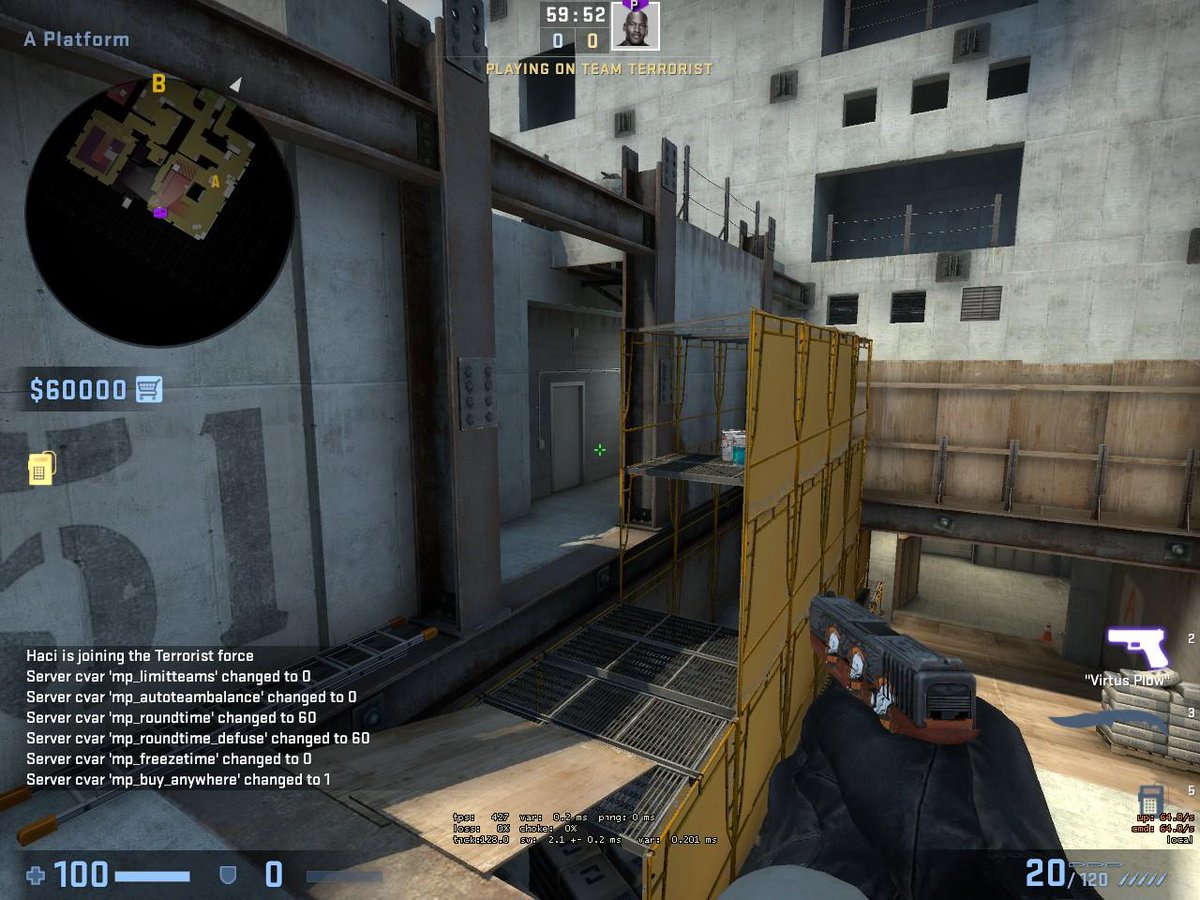 But for other people, it’s chronic.
But for other people, it’s chronic.
Living with vertigo can be frustrating. Your episodes may be unpredictable and sporadic. Some days, you may not experience any symptoms, while other days, you might have debilitating bouts of dizziness. The good news is there are effective treatment options and most of the time, these treatments can help you control or eliminate your symptoms, so you can enjoy everyday activities.
Vertigo: Frequently asked questions | University of Iowa Hospitals & Clinics
Vertigo is a subjective sensation. Nobody other than the patient can experience what that person is experiencing. Many people with this disorder are inadequately evaluated.
Since most forms of vertigo are readily treated, we recommend anyone with this condition to seek further attention despite the fact that prior visits to one’s physician may not have resulted in alleviation of this condition.
What is vertigo?
The precise definition of vertigo is an illusion of motion. But it also refers not just to illusions of motions, but chronic or intermittent sensation of loss of balance.
But it also refers not just to illusions of motions, but chronic or intermittent sensation of loss of balance.
What are common causes of vertigo?
There are a large number of causes of vertigo, but the three most common causes are:
- Cold viruses
- Head trauma
- Meniere’s disease
How are causes of vertigo related?
These are all conditions that affect the inner ear. The inner ear is responsible for our sense of balance and also our sense of position in space. When the inner ear dysfunctions, we lose our sense of balance and frequently suffer symptoms such as vertigo, nausea, vomiting, and loss of balance.
Can vertigo be treated?
Most causes of vertigo are readily treatable with physical therapy, medication, surgery, and time. By time, I mean, waiting because many causes of vertigo resolve spontaneously. Because of the many causes of vertigo, the critical issue in choosing a physician is their experience with vertigo.
Who should I see for vertigo treatment?
There are two types of physicians whose specialties include dizziness:
- Neurologists, who would deal in treating chronic forms of vertigo.
- Otolaryngologists, who are neurologists that specialize in ear disease.
Since many types of vertigo go away without treatment, initial evaluation by a general practitioner or family doctor is appropriate early on, reserving specialty care for chronic cases.
At what age is vertigo most common?
It is extremely rare, but not impossible, for young children to have vertigo. It becomes more common in the early 20s and affects all ages commonly after that. Its consequences however become more substantial as you get older because loss of balance in the elderly commonly leads to major fractures.
Can someone get vertigo from playing a video game that simulates movement?
Three-dimensional video games can cause a brief sensation of vertigo, but it would not persist.
Can stress cause vertigo?
Mental stress can make many forms of vertigo worse, but will not, by itself, produce vertigo.
What is positional vertigo?
Positional vertigo refers to a variety of conditions where a change in the position of your head produces a sense of vertigo.
Benign paroxysmal positional vertigo (BPPV)
The most common form is a condition called benign paroxysmal positional vertigo or BPPV for short. In BPPV when one lies down with the affected ear toward the floor, one gets a brief but very intense feeling of the world spinning around.
Is ataxia related to vertigo?
Ataxia refers to clumsiness. Disease of the inner ear does not produce ataxia per se but can be confused with ataxia. Ataxia is produced by disease of the cerebellum, a part of the brain that works with the inner ears to help maintain balance and also fine motor control.
Can the symptoms of vertigo be confused with the symptoms of other diseases or conditions?
Yes, this is a common occurrence. Usually they are mistaken because of use of the word dizziness. Dizziness can refer to lightheadedness, which is not vertigo and is commonly produced by vascular problems. Dizziness also can mean vertigo, and there are very few causes of vertigo that do not come from the inner ear. Occasionally, rare types of strokes can cause vertigo, but these are usually associated with other neurological symptoms as well.
Usually they are mistaken because of use of the word dizziness. Dizziness can refer to lightheadedness, which is not vertigo and is commonly produced by vascular problems. Dizziness also can mean vertigo, and there are very few causes of vertigo that do not come from the inner ear. Occasionally, rare types of strokes can cause vertigo, but these are usually associated with other neurological symptoms as well.
Are there any surgical procedures to correct vertigo?
There are surgical procedures to correct certain types of vertigo. If the vertigo is caused by a disease such as Meniere’s disease, where the function of the involved ear changes over time, and these changes do not respond to medical therapy, then surgical intervention may eliminate the vertigo.
How does physical therapy help vertigo?
In forms of vertigo, where the inner ear has suffered damage and the function of that ear is fixed, not changing over time, physical therapy can be quite helpful. When the inner ear is damaged, people commonly experience severe spinning for several days. If after several weeks the person still has a loss of balance, then physical therapy can help restore this balance. The reason physical therapy is helpful is that it helps train the brain to compensate for the loss of function in the ear. Just as you can make a muscle stronger by exercising it, you can make the balance system in the brain work better by exercising it.
When the inner ear is damaged, people commonly experience severe spinning for several days. If after several weeks the person still has a loss of balance, then physical therapy can help restore this balance. The reason physical therapy is helpful is that it helps train the brain to compensate for the loss of function in the ear. Just as you can make a muscle stronger by exercising it, you can make the balance system in the brain work better by exercising it.
What kind of physical therapy works to reduce vertigo?
It’s called vestibular rehabilitation, and it is a relatively new form of physical therapy. Not all physical therapists are trained in the practice. Typically the exercises consist of movements that initially make the vertigo worse and balance tasks that are quite difficult. By doing these repetitively, the balance system in the brain learns to function better. Common exercises include moving the eyes from side to side, rotating the head from side to side, rotating the head from side to side while walking down a corridor, and things like this.
Can vertigo be associated with the onset of a menstrual period?
Some women with Meniere’s disease have worse symptoms during their menstrual period. This is not an uncommon symptom because Meniere’s disease is exacerbated by salt retention, and menstrual periods are associated with salt retention.
Is anxiety associated with vertigo?
Yes, vertigo causes extreme anxiety in most people. Anxiety, by itself, does not produce vertigo. However, in association with conditions that do produce vertigo, anxiety can make the vertigo much worse. People with certain anxiety disorders such as panic attacks can sometimes also experience vertigo.
What is particle repositioning maneuver?
Particle positioning maneuvers are a treatment for benign paroxysmal positional vertigo (BPPV).
What causes BPPV?
BPPV is caused by loose otoconia within the inner ear. Otoconia are small calcium carbonate crystals that are part of the balance mechanism. In BPPV, these crystals break loose from their normal attachments and are free to tumble around the inner ear. When the involved ear is suddenly put in a downward position, the otoconia stimulate part of the inner ear abnormally. This results in a brief but intense whirling vertigo.
In BPPV, these crystals break loose from their normal attachments and are free to tumble around the inner ear. When the involved ear is suddenly put in a downward position, the otoconia stimulate part of the inner ear abnormally. This results in a brief but intense whirling vertigo.
Eliminating symptoms of BPPV
Particle position maneuvers are a series of body turns that maneuver the otoconia into a different part of the inner ear where they will not cause symptoms. It is a very effective maneuver that takes just a few minutes to perform.
How does vertigo relate to labrynthitis?
Labyrinthitis or vestibular neuronitis is a presumed viral infection of the vestibular nerve. It causes sudden loss of function in the balance system of one ear. The brain normally compares the two ears. When you turn in any direction, the output of one ear to the brain goes up and the output of the other goes down. The brain looks at the difference between the two ears and says “I’m turning. ” When one ear develops labyrinthitis, its output suddenly drops. The brain sees a difference between the two ears, and that produces the feeling of spinning. This is commonly associated with nausea and vomiting and the worst part of it usually lasts for about three days. For several weeks afterward, it is common to feel a little bit off balance. Typically, after three to four weeks the balance returns to normal.
” When one ear develops labyrinthitis, its output suddenly drops. The brain sees a difference between the two ears, and that produces the feeling of spinning. This is commonly associated with nausea and vomiting and the worst part of it usually lasts for about three days. For several weeks afterward, it is common to feel a little bit off balance. Typically, after three to four weeks the balance returns to normal.
Dizziness and Vertigo – Ear, Nose, and Throat Disorders
In addition to warning signs, important features that doctors ask about include severity of the symptoms (has the person fallen or missed work), presence of vomiting and/or ringing in the ears, whether symptoms come and go or have been continuous, and possible triggers of the symptoms (for example, changing position of the head or taking a new drug).
During the physical examination, the ear, eye, and neurologic examinations are particularly important. Hearing is tested, and the ears are examined for abnormalities of the ear canal and eardrum. The eyes are checked for abnormal movements, such as nystagmus.
The eyes are checked for abnormal movements, such as nystagmus.
Nystagmus suggests a disorder affecting the inner ear or various nerve connections in the brain stem. With nystagmus, the eyes rapidly and repeatedly jerk in one direction and then return more slowly to their original position. Doctors deliberately try to trigger nystagmus if people do not have it spontaneously because the direction in which the eyes move and how long the nystagmus lasts help doctors diagnose the cause of vertigo. To trigger nystagmus, doctors first lay people on their back and gently roll them from side to side while watching their eyes. Specialists sometimes have the person wear thick, one-way, magnifying glasses called Frenzel lenses. Doctors can easily see the person’s magnified eyes through the lenses, but the person sees a blur and cannot visually fixate on anything (visual fixation makes it harder to trigger nystagmus). During the maneuver to induce nystagmus, eye movements may be recorded by using electrodes (sensors that stick to the skin) placed around each eye (electronystagmography) or by a video camera attached to the Frenzel lenses (video electronystagmography). If no nystagmus occurs with rolling side to side, doctors try other maneuvers. These other maneuvers include putting ice-cold water into the ear canal (caloric testing) and rapidly changing the position of the person’s head (Dix-Hallpike maneuver
If no nystagmus occurs with rolling side to side, doctors try other maneuvers. These other maneuvers include putting ice-cold water into the ear canal (caloric testing) and rapidly changing the position of the person’s head (Dix-Hallpike maneuver
Benign Paroxysmal Positional Vertigo
Benign paroxysmal positional vertigo, or BPPV, is a common disorder causing short episodes of vertigo (a false sensation of moving or spinning) in response to changes in head position that stimulate…
read more
).
Doctors also do a complete neurologic examination, paying particular attention to tests of walking, balance, and coordination.
How to Care for a Loved One With Vertigo
A dizzy spell or feeling disoriented often gets the following response
“You need to sit down”
“Have some water”
“Do you need some sugar or chocolate?”
For quite a few folks that might not be what they need. Unfortunately, one of the most percetible symptoms for Vertigo is also shared with a couple of other conditions like dehydration, low blood pressure episode etc.
Unfortunately, one of the most percetible symptoms for Vertigo is also shared with a couple of other conditions like dehydration, low blood pressure episode etc.
Vertigo is more common than you may think. Often, friends and family do not understand vertigo or what to do about it. Wondering how you can tell the difference or help in such situations? Here’s how
Do Your Research
Vertigo is often an indicator of a bigger health issue. There are many types of vertigo and their frequencies and intensities vary based on the root cause. This significantly impacts treatment. If you are a caregiver for someone with vertigo, it is important that you know about the different types of vertigo so you can support them appropriately. Vertigo can be of two types: one occurs occasionally, and the second repeats itself at a certain frequency or under certain situations.
The common causes of vertigo include:
- Labyrinthitis, an ear infection of the labyrinth ( Inner ear).

- Vestibular neuronitis, caused by viral inflammation of the vestibular nerve, which is responsible for balance in the body.
- Benign paroxysmal positional vertigo (BPPV), caused by deposits that move in to the wrong part of the inner ear, which manages the sense of balance in the body.
- Ménière’s disease, a long-term disorder of the inner ear which can be addressed with medication and appropriate changes to diet.
- Central vertigo, caused by migraines, brain tumours or problems in a part of the brain like the cerebellum or the brain stem.
- Stroke, head and neck injuries.
- Dehydration.
- Vitamin D deficiency.
Timely diagnosis and treatment of these conditions have been known to help stop vertigo. You can familiarize yourself with the causes so you can direct someone who might be having vertigo to the right help.
Identify and Decrease Triggers
Stress is one of the triggers for vertigo. By helping your friend or family member deal with stress, you can help them maintain better overall health.
By helping your friend or family member deal with stress, you can help them maintain better overall health.
Lack of sleep can also aggravate the conditions that cause vertigo. Help your loved one create and follow a routine where their work and personal schedule allows them to get ample sleep every day.
Alcohol can directly increase the severity and frequency of vertigo. As a friend, you can make a lot of difference to a loved one by ensuring that they stay away from alcohol. Try finding alcohol-free activities and hobbies you can participate in together.
Help Prevent Symptoms
If you know what triggers vertigo in your friend or family member, you can take active steps to mitigate the problem and help them lead normal lives even as they deal with their condition.
Work with the person to maintain their medication schedules. Medication prescribed by doctors for such conditions can help keep the symptoms under control. You can also encourage them to practice the exercises for vertigo as recommended by their doctor on a regular basis.
A person who has vertigo is at an increased risk of losing their balance and falling, so watch out for situations that might compromise their safety. You should ensure that they avoid climbing ladders and operating machinery when they are prone to vertigo spells. Be careful to not leave around objects that create a tripping hazard.
Vertigo is a condition that can be managed with appropriate measures. While the condition persists, take care that your loved ones avoid hazardous situations. Give them the emotional support they seek and show that you understand and sympathise with their real struggles.
Disclaimer: This publication/editorial/article is meant for awareness/educational purposes and does not constitute or imply an endorsement, sponsorship or recommendation of any Products. Please consult your doctor/healthcare practitioner before starting any diet, medication or exercise.
Balance, Dizziness and Vertigo * Michigan Ear Institute Farmington Hills, Dearborn, Royal Oak, Novi MI
Download Dizziness and Balance Brochure
The Dizziness, Balance, and Falls Center at the Michigan Ear Institute has been recognized internationally as an outstanding clinical program for the diagnosis and treatment of balance disorders. After diagnosing the balance problem various treatment modalities including medical, surgical, and vestibular rehabilitation can improve overall balance function. Common balance disorders we see include Meniere’s disease, benign positional vertigo, vestibular neuritis, post traumatic dizziness, among other processes.
After diagnosing the balance problem various treatment modalities including medical, surgical, and vestibular rehabilitation can improve overall balance function. Common balance disorders we see include Meniere’s disease, benign positional vertigo, vestibular neuritis, post traumatic dizziness, among other processes.
Dizziness is a general term for many different symptoms. While it generally means an abnormal sensation of motion, it can also mean imbalance, lightheadedness, blacking out, staggering, disorientation, weakness and other sensations. Symptoms can range from mild and brief to severe spinning sensations accompanied by nausea also known as vertigo. For clarity the definitions we use to talk about dizziness are used.
Dizziness – A general term for all abnormal symptoms of balance and stability.
Imbalance – Inability to keep one’s balance especially when standing.
Lightheadedness – The feeling of nearly passing out, similar to the feeling you might have if you hold your breath for a long time.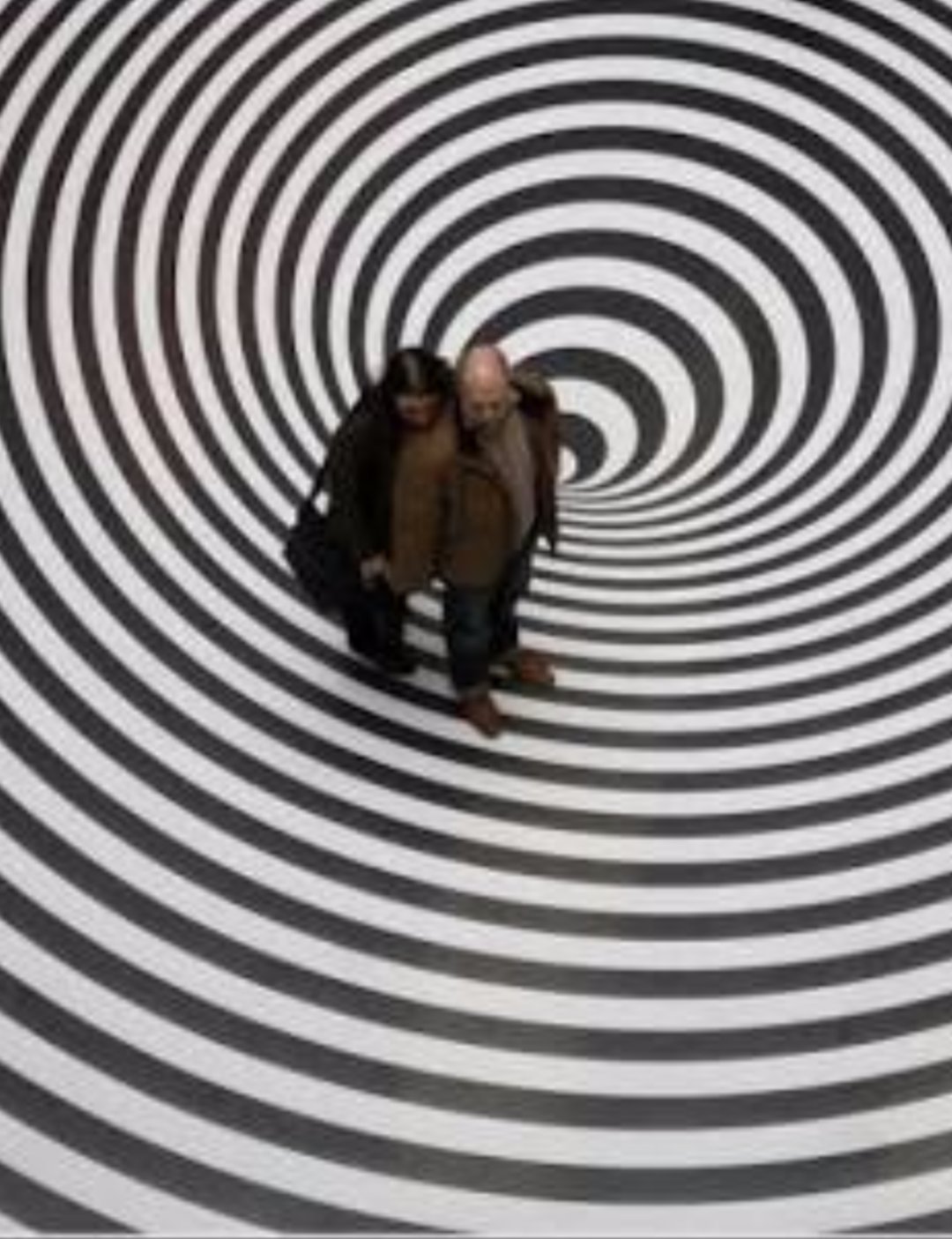
Vertigo – The sensation that you or your surroundings are moving or spinning or whirling.
Balance requires the interaction between many different organs and systems in the body. The brain is the central processing center for all balance information coming from the senses and for all information going out to the muscles of balance. Input comes from three main areas: vision, the balance portion of the inner ear, and the touch (from the feet and joints). Vision is an important cue to the brain which tells us if we are moving relative to our surroundings.
Anatomy
There are two parts of hearing: mechanical and nerve (or electric). The mechanical part of hearing picks up sound from the outer ear canal and then vibrates the ear drum and the three tiny hearing bones in the middle ear. The inner ear looks a bit like a snail. It has two halves which are connected and are filled with fluid. The coil or cochlea takes care of the nerve part of hearing. Like a telephone it takes the vibration and turns it into an electric signal that is then relayed to the brain.
Like a telephone it takes the vibration and turns it into an electric signal that is then relayed to the brain.
The other half of the inner ear is the balance or vestibular system. There are three balance canals, each set in different directions that respond to rotational movement of the head. Depending on which way you turn fluid, called end lymph, move within the canals and send the direction to the brain by way of the vestibular nerve.
There are also 2 small compartments that have sensory cells that are covered with small calcium crystals in a gelatin matrix. These compartments are responsible for sensing linear movement, such as swaying, rocking or bouncing movements. When the crystals of this compartment are dislodged, they may cause BPPV (benign paroxysmal vertigo).
The inner ear fluid undergoes a natural recycling every day. It is made from the brain’s spinal fluid and is absorbed by the endolymphatic sac. In Meniere’s syndrome the sac fails to absorb enough fluid. This increases inner ear pressure resulting in dizziness and hearing loss.
This increases inner ear pressure resulting in dizziness and hearing loss.
Also in close association with the ear is the facial nerve. It helps move the face and also provides for some of the taste to the tip of the tongue.
Maintenance of Balance
Balance is maintained by the interactions in the brain of nerve impulses from the inner ear, the eye, the neck muscles, and the muscles and joints of the limbs. A disturbance in any of these areas may result in the subjective sensation of dizziness or unsteadiness. General disturbances of body function may lead to dizziness by interfering with coordination of the impulses of the brain.
Causes of Dizziness
Dizziness can be grouped into types by the portion of the entire balance system that is not working properly. The different portions include the inner ear, the brain, the eyes and the limbs (neck, back, and leg muscles and joints which react to keep us upright).
Inner Ear Dizziness
Half of the inner ear is used for hearing (the cochlea) and the other half is used for balance (the labyrinth). If the labyrinth or the nerve that connects it to the brain is malfunctioning, dizziness can result. Many types of maladies occur in the inner ear to cause dizziness, including Meniere’s syndrome, labyrinthitis, positional vertigo, and vestibular neuritis, migraine and tumors of the inner ear nerves. These usually cause imbalance, vertigo (spinning), and nausea. It can also be accompanied by tinnitus and hearing loss, if the nearby cochlea is also affected. These diseases will be further explained.
If the labyrinth or the nerve that connects it to the brain is malfunctioning, dizziness can result. Many types of maladies occur in the inner ear to cause dizziness, including Meniere’s syndrome, labyrinthitis, positional vertigo, and vestibular neuritis, migraine and tumors of the inner ear nerves. These usually cause imbalance, vertigo (spinning), and nausea. It can also be accompanied by tinnitus and hearing loss, if the nearby cochlea is also affected. These diseases will be further explained.
Central Dizziness
Central dizziness is caused by problems in the balance portion of the brain. Anytime this portion of the brain is not working properly, dizziness can occur. Symptoms usually include lightheadedness, disorientation, imbalance, and sometimes even blacking out. Causes of central dizziness include low blood sugar, low blood pressure to the brain, strokes, multiple sclerosis, migraine headaches, head injury, tumors, and the aging process, among others. Treating these types of dizziness usual involves treating the problem which is causing the brain to not work properly.
Treating these types of dizziness usual involves treating the problem which is causing the brain to not work properly.
Muscle-Joint Dizziness
This type of dizziness is uncommon. If the muscles, joints or touch sensors of the limbs are not working well, it becomes difficult for the body to react to motion, and makes it difficult to remain upright. Causes of muscle-joint dizziness include muscular dystrophy; sever diabetes, arthritis, joint replacements, and injuries. Symptoms are usually imbalance and unsteadiness.
Visual Dizziness
Eye muscle imbalance and poor vision can make one’s balance worse. The brain relies on information from the eyes to help with balance. Car sickness or sea sickness are types of visual dizziness because the eyes are constantly adjusting to a moving visual field and confuses the balance part of the brain. This can lead to dizziness, nausea and vomiting.
Diagnostic Tests
Dizziness can be caused by numerous disturbances to any of many different parts of the body. Based upon your history and physical findings your physician may require further tests to complete a full evaluation. The tests necessary are determined at the time of examination and may include hearing and balance tests, imaging (CT or MRI scans), blood tests, and ultrasound tests. A general physical exam and neurological tests may also be needed.
Based upon your history and physical findings your physician may require further tests to complete a full evaluation. The tests necessary are determined at the time of examination and may include hearing and balance tests, imaging (CT or MRI scans), blood tests, and ultrasound tests. A general physical exam and neurological tests may also be needed.
The most common test for dizziness is the electronystagmogram (ENG) or videonystagmogram (VNG). In these tests the strength of the inner ear is tested as well as the coordination of eye movements. They involve watching the eye movements after placing warm or cool air into the ear canal. This usually causes a normal sensation of brief dizziness. It is important not to be taking any medications which can affect the test such as Valium, Antivert, alcohol and others. When scheduling this test make sure to ask if your medications will impact the outcome of the tests.
Other tests that are done for dizziness are the electrocochleography (ECoG) and Vestibular evoked myogenic potentials (VEMP). These painless tests may be useful in determining the cause of dizziness in complex cases.
These painless tests may be useful in determining the cause of dizziness in complex cases.
The object of this evaluation is to be certain that there is no serious or life threatening disease and to pinpoint the exact site of the problem. This lays the groundwork for effective medical or surgical treatment.
Diagnosis can often be difficult. Frequently multiple tests must be conducted. Patience and understanding is necessary on the part of the doctor and patient alike.
Lethal Vertigo | PSNet
The Case
A 64-year-old woman, with no prior medical history, complained of sudden onset of severe vertigo and vomiting, without headache. Her initial blood pressure in the emergency department (ED) was 170/90 (at about 4:00 PM). Physical examination was limited because the patient’s vertigo dramatically worsened when she opened her eyes. Neurological exam was grossly normal—the patient could follow commands and there was no focal weakness. A provisional diagnosis of labyrinthitis was made, and prochlorperazine (Compazine) 10 mg IV was administered. An hour later, however, the patient noted little improvement, and so lorazepam 2 mg IV was given. An hour after that, the patient was signed out to a second attending, who administered atropine 0.5 mg IV. Four hours later, she was signed out to a third attending. At that point (10:00 PM), the physician decided to hold her overnight in the ED and admit her if she was not better in the morning. At 11:00 PM, the patient complained of a headache and was given acetaminophen 650 mg by mouth. An hour later, the patient sustained a cardiopulmonary arrest and could not be resuscitated.
A provisional diagnosis of labyrinthitis was made, and prochlorperazine (Compazine) 10 mg IV was administered. An hour later, however, the patient noted little improvement, and so lorazepam 2 mg IV was given. An hour after that, the patient was signed out to a second attending, who administered atropine 0.5 mg IV. Four hours later, she was signed out to a third attending. At that point (10:00 PM), the physician decided to hold her overnight in the ED and admit her if she was not better in the morning. At 11:00 PM, the patient complained of a headache and was given acetaminophen 650 mg by mouth. An hour later, the patient sustained a cardiopulmonary arrest and could not be resuscitated.
Autopsy revealed that the patient had died of a cerebellar hemorrhage. A subsequent review of the case indicated that the death was potentially avoidable, had life-saving neurosurgery been performed within the first few hours of her ED presentation.
Vertigo is an illusory sensation of motion, of self or surroundings, and can be rotational (ie, a spinning sensation) or translational (ie, a sense of floating upward). The causes of vertigo are many; the common denominator is an abnormality in the vestibular system, which comprises the inner ear labyrinth and the central nervous system (CNS) structures that process signals from the labyrinth. Vertigo, unlike nonspecific “dizziness,” is never constant but rather occurs as either a single episode or recurrent episodes. Vertigo can occur spontaneously (eg, as the result of vestibular neuritis or Ménière’s disease), or can be provoked, as in benign paroxysmal positional vertigo.(1) When severe, vertigo is often accompanied by nausea and vomiting, as it was in this case.
The causes of vertigo are many; the common denominator is an abnormality in the vestibular system, which comprises the inner ear labyrinth and the central nervous system (CNS) structures that process signals from the labyrinth. Vertigo, unlike nonspecific “dizziness,” is never constant but rather occurs as either a single episode or recurrent episodes. Vertigo can occur spontaneously (eg, as the result of vestibular neuritis or Ménière’s disease), or can be provoked, as in benign paroxysmal positional vertigo.(1) When severe, vertigo is often accompanied by nausea and vomiting, as it was in this case.
When patients experience vertigo for the first time, especially if associated with nausea and vomiting, they usually seek medical attention immediately, typically in an emergency department. The causes of vertigo encountered in the ED setting are given in the Table. Most patients presenting to an ED with vertigo can be managed conservatively with vestibular suppressants and antiemetics and then sent home.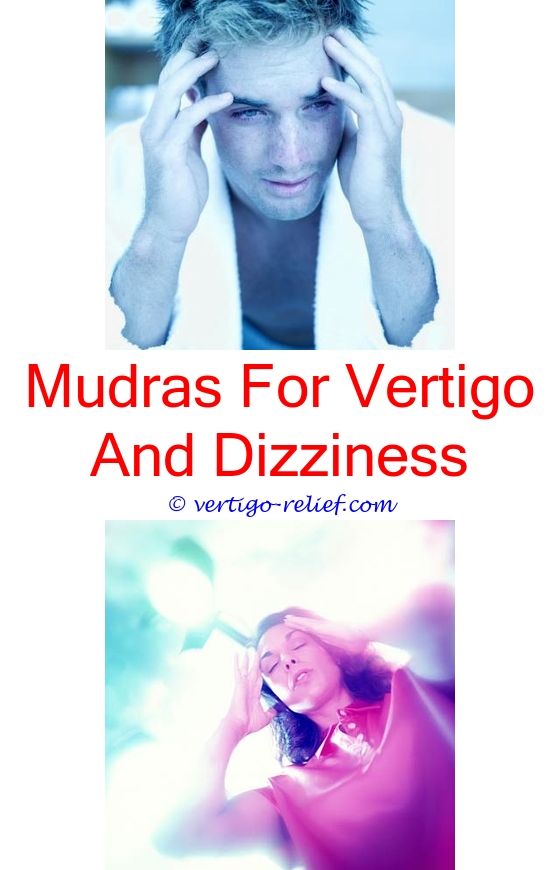 A small percentage of patients with vertigo will require admission to the hospital to treat dehydration with intravenous fluids or for further management, such as for a cerebellar infarction.(2) Rarely, as in this case, vertigo represents the presenting symptom of a life-threatening, treatable condition, such as a cerebellar hemorrhage.(3)
A small percentage of patients with vertigo will require admission to the hospital to treat dehydration with intravenous fluids or for further management, such as for a cerebellar infarction.(2) Rarely, as in this case, vertigo represents the presenting symptom of a life-threatening, treatable condition, such as a cerebellar hemorrhage.(3)
What features of this case suggest that the CNS, not the labyrinth, was the location of the abnormality? Unfortunately, definitively localizing vertigo to the central (brain) or peripheral (inner ear) portion of the vestibular system is difficult and sometimes impossible since vertigo itself and most associated signs and symptoms (eg, nausea, vomiting, and diaphoresis) can be the same in both central and peripheral vertigo. However, some signs and symptoms associated with vertigo can point more specifically to the inner ear or to the brain. For example, hearing loss and tinnitus suggest the inner ear, whereas cranial nerve or cerebellar findings suggest a brain abnormality. This patient did not present with any signs or symptoms that definitively implicated the brain as the location for her vertigo. However, several symptoms and signs, though not pathognomonic for a central cause, are so highly suggestive of a CNS abnormality that brain imaging should be obtained promptly when they accompany vertigo. One such symptom is headache, even though it is an inconsistent symptom of central vertigo and can sometimes be seen in peripheral syndromes as well. In a patient with vertigo, an inability to ambulate should also alert the treating physician that a central process is highly likely, thus prompting immediate brain imaging.(4) We have no indication from the case record that the patient’s gait was evaluated (either initially or following treatment for vertigo and nausea). Vertical nystagmus and horizontal direction-changing nystagmus are definite central signs; unidirectional horizontal nystagmus can be a peripheral or a central sign.
This patient did not present with any signs or symptoms that definitively implicated the brain as the location for her vertigo. However, several symptoms and signs, though not pathognomonic for a central cause, are so highly suggestive of a CNS abnormality that brain imaging should be obtained promptly when they accompany vertigo. One such symptom is headache, even though it is an inconsistent symptom of central vertigo and can sometimes be seen in peripheral syndromes as well. In a patient with vertigo, an inability to ambulate should also alert the treating physician that a central process is highly likely, thus prompting immediate brain imaging.(4) We have no indication from the case record that the patient’s gait was evaluated (either initially or following treatment for vertigo and nausea). Vertical nystagmus and horizontal direction-changing nystagmus are definite central signs; unidirectional horizontal nystagmus can be a peripheral or a central sign.
Given the stakes involved in missing a central lesion, many evaluation centers now almost routinely perform brain imaging for patients presenting with new-onset acute vertigo, even in the absence of either definitive or suggestive CNS signs. Although such imaging of patients with vertigo will rarely uncover a structural abnormality, brain imaging is non-invasive and is the only means of ruling out a life-threatening disorder. Although a non-contrast computed tomography (CT) scan of the brain is adequate for ruling out a life-threatening hemorrhage, magnetic resonance imaging (MRI) is equally as reliable for this purpose.(5) Additionally, MRI can uncover recent ischemic infarctions and, with magnetic resonance angiography, arterial dissections.
Although such imaging of patients with vertigo will rarely uncover a structural abnormality, brain imaging is non-invasive and is the only means of ruling out a life-threatening disorder. Although a non-contrast computed tomography (CT) scan of the brain is adequate for ruling out a life-threatening hemorrhage, magnetic resonance imaging (MRI) is equally as reliable for this purpose.(5) Additionally, MRI can uncover recent ischemic infarctions and, with magnetic resonance angiography, arterial dissections.
What led to this patient’s demise despite having an easily diagnosed, treatable condition? Primarily, three different physicians failed to seriously consider a central cause of vertigo, as evidenced by what appears to be (i) the omission of a complete neurologic examination by each examiner, and (ii) the failure to obtain brain imaging by the third attending, despite the presence of headache in a patient who had presented more than six hours earlier with vertigo and who had been treated with three different vestibular suppressants. Clinicians must never forget that a peripheral localization for vertigo cannot be confirmed with certainty. Rather, a peripheral localization is a diagnosis of exclusion when there are no symptoms, signs, laboratory findings, or evidence on imaging that point to a central process. Since the cerebellum has numerous connections with central vestibular structures, cerebellar lesions can masquerade as peripheral vestibular disorders. That appears to have been the case here: this patient’s presenting symptom complex of vertigo, vomiting, and visual intolerance were, in retrospect, all produced by a cerebellar hemorrhage (the Figure, of a cerebellar infarction, demonstrates the vascular anatomy), probably because of involvement of the vestibulocerebellum—that is, the flocculonodular lobe, which lies at the caudal extent of the cerebellum.
Clinicians must never forget that a peripheral localization for vertigo cannot be confirmed with certainty. Rather, a peripheral localization is a diagnosis of exclusion when there are no symptoms, signs, laboratory findings, or evidence on imaging that point to a central process. Since the cerebellum has numerous connections with central vestibular structures, cerebellar lesions can masquerade as peripheral vestibular disorders. That appears to have been the case here: this patient’s presenting symptom complex of vertigo, vomiting, and visual intolerance were, in retrospect, all produced by a cerebellar hemorrhage (the Figure, of a cerebellar infarction, demonstrates the vascular anatomy), probably because of involvement of the vestibulocerebellum—that is, the flocculonodular lobe, which lies at the caudal extent of the cerebellum.
Was a neurologic consultation necessary in this case? Probably not. Had any one of the three attendings considered obtaining a neurologic consultation, they probably would have done so because they were seriously entertaining a central disorder. That concern should have led them to assess the patient’s gait and obtain diagnostic brain imaging, with or without a formal neurologic consultation.
That concern should have led them to assess the patient’s gait and obtain diagnostic brain imaging, with or without a formal neurologic consultation.
An obvious “system failure” occurred in this case, wherein a patient had three different attendings in the span of six hours. In a busy emergency department, it is not reasonable to expect each new attending to repeat a full neurologic examination on each patient. However, when the presenting complaint is vertigo, a focused neurologic examination can successfully uncover a central abnormality, since the brain regions that can cause vertigo are limited to the brain stem and cerebellum. Thus, an abbreviated examination looking for an altered level of consciousness, gaze palsy (6), or a central (eg, vertical or horizontal direction-changing) type of nystagmus, facial numbness or weakness, upper extremity incoordination, or an ability to walk should suffice to rule out a central abnormality. This type of focused examination requires only a few minutes and should be routinely repeated when a patient with vertigo is “handed off” to another provider. Lowering the room lights to reduce vertigo can sometimes make it possible to examine a patient’s eye movements. Since a patient’s condition may change over the course of hours, this patient should have been examined repeatedly, at least at hourly intervals, to make a diagnosis in a timely fashion, even if multiple attendings had not been involved in the case.
Lowering the room lights to reduce vertigo can sometimes make it possible to examine a patient’s eye movements. Since a patient’s condition may change over the course of hours, this patient should have been examined repeatedly, at least at hourly intervals, to make a diagnosis in a timely fashion, even if multiple attendings had not been involved in the case.
Take-Home Points
- Most patients presenting to an ED with vertigo can be managed conservatively with vestibular suppressants and antiemetics and then sent home. Rarely, however, vertigo represents the presenting symptom of a cerebellar hemorrhage, which is a life-threatening, treatable condition.
- In a patient with vertigo, a head CT or MRI is required if:
- There is an associated headache;
- The patient is unable to ambulate; or
- Physical examination findings suggest a central cause.
- A central process can be ruled out if all of the following are true:
- There is no altered level of consciousness;
- There is no gaze palsy;
- There is no central (ie, vertical or direction-changing horizontal) nystagmus;
- There is no facial numbness;
- There is no upper extremity incoordination; and
- The patient can walk.

- A peripheral (ie, inner ear) localization for vertigo cannot be confirmed with certainty. Rather, a peripheral localization is a diagnosis of exclusion when there are no symptoms, signs, laboratory findings, or evidence on imaging for a central process.
Joseph M. Furman, MD, PhD Professor of Otolaryngology and Neurology University of Pittsburgh School of Medicine
References
1. Furman JM, Cass SP. Vestibular disorders: a case-study approach. 2nd ed. New York, NY: Oxford University Press, Inc; 2003.
2. Huang CY, Yu YL. Small cerebellar strokes may mimic labyrinthine lesions. J Neurol Neurosurg Psychiatry. 1985;48:263-5.[ go to PubMed ]
3. van der Hoop RG, Vermeulen M, van Gijn J. Cerebellar hemorrhage: diagnosis and treatment. Surg Neurol. 1988;29:6-10.[ go to PubMed ]
4. Hotson JR, Baloh RW. Acute vestibular syndrome. N Engl J Med. 1998;339:680-5.[ go to PubMed ]
5. Fiebach JB, Schellinger PD, Gass A, et al. Stroke magnetic resonance imaging is accurate in hyperacute intracerebral hemorrhage: a multicenter study on the validity of stroke imaging. Stroke. 2004;35:502-6.[ go to PubMed ]
Stroke. 2004;35:502-6.[ go to PubMed ]
6. Kubo T, Sakata Y, Sakai S, Koizuka I, Matsunaga T, Nogawa T. Clinical observations in the acute phase of cerebellar hemorrhage and infarction. Acta Otolaryngol Suppl. 1988;447:81-7.[ go to PubMed ]
7. Alvord LS, Herr RD. ENG in the emergency room: subtest results in acutely dizzy patients. J Am Acad Audiol. 1994;5:384-9.[ go to PubMed ]
Table
Table. Specific Diagnoses of 93 Patients Presenting with Dizziness in an Emergency Room
Classification | Diagnosis | n |
|---|---|---|
Central | Cerebellar infarct | 2 |
Alcohol or drug toxicity | 2 | |
Brain tumor | 1 | |
Central nervous system concussion | 1 | |
Hepatic encephalitis | 1 | |
Hypertension | 1 | |
Hyponatremia | 1 | |
Multiple sclerosis | 1 | |
Pseudotumor | 1 | |
Total | 11 | |
Peripheral | Acute labyrinthitis | 18 |
Peripheral vestibular disorder | 17 | |
Benign positional vertigo | 7 | |
Ménière’s disease | 4 | |
Labyrinthine concussion | 4 | |
Cervical disorder | 2 | |
Serous otitis media | 1 | |
Total | 53 | |
Other | Hyperventilation | 3 |
Psychogenesis | 2 | |
Malingering | 1 | |
Fumes intoxication | 1 | |
Cystitis | 1 | |
Migraine | 1 | |
Total | 9 | |
Unknown | Total | 20 |
Reprinted with permission from The Journal of the American Academy of Audiology. (7)
(7)
Figure
Figure. MRI of a Right Inferior Cerebellar Infarction
The inset illustrates the vascular supply to the inferior cerebellum, which is perfused by the medial and lateral branches of the posterior inferior cerebellar artery (PICA) and the anterior inferior cerebellar artery (AICA).
Reprinted with permission from The New England Journal of Medicine.(4)
Dizziness
A sudden jump in adrenaline in the blood, caused by a sudden or frightening event for a person. A high level of adrenaline in the blood provokes a spasm of the vessels of the brain, the blood flow to it decreases. When traveling by air or water, dizziness is a symptom of “seasickness” – kinetosis. This happens because the brain does not have time to process information – a conflict arises between the signal entering the nervous system from the vestibular apparatus and the signal transmitted by the organs of vision
If your head starts spinning when you limit yourself to food – this is due to a deficiency of glucose in the body.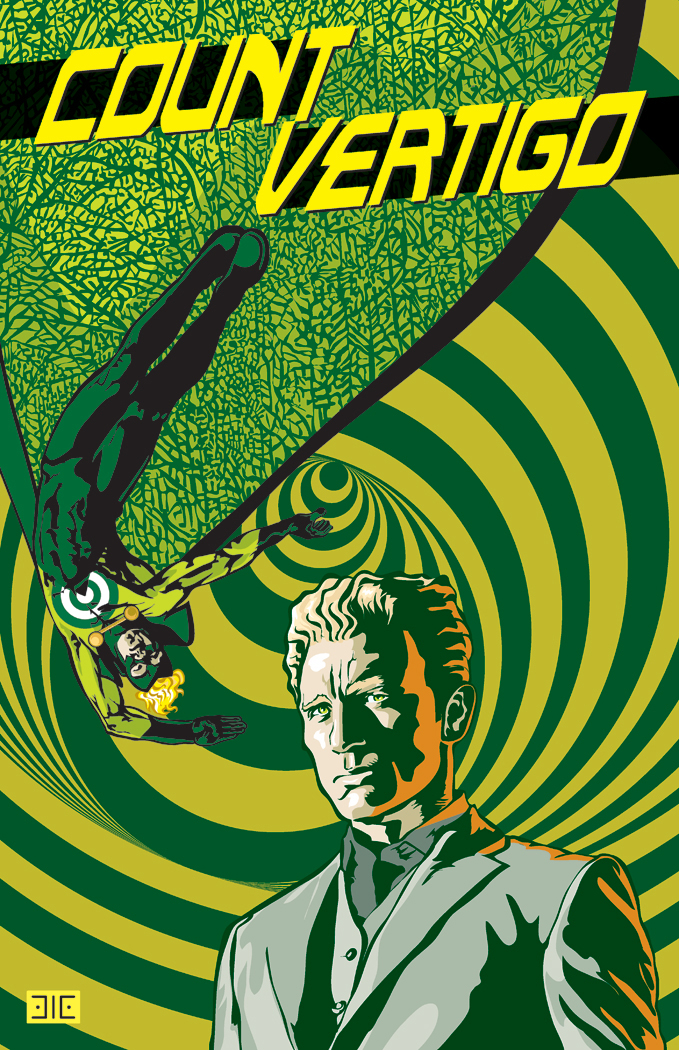 As a rule, this condition is accompanied by weakness and nausea. Lack of nutrition can lead to a weakening of the body’s defenses and provoke a serious illness.
As a rule, this condition is accompanied by weakness and nausea. Lack of nutrition can lead to a weakening of the body’s defenses and provoke a serious illness.
When doing exercises aimed at strengthening the muscles of the neck, there is a feeling of loss of coordination. When you turn your head sharply, the blood supply to the brain drops significantly. The same happens when you stand up abruptly. Therefore, it is necessary to carefully and smoothly make movements in everyday life and during physical exertion.
Often, the head begins to spin when using sedative, hypoallergenic drugs, as well as antibiotics.
Diseases causing dizziness
- With vertigo (a disease of the vestibular apparatus), the head starts spinning, there is a rapid or slow heartbeat, pressure surges, nausea and vomiting. To maintain the normal functioning of the vestibular apparatus, it is recommended to take one of the drugs: Dramina, Reklanium, Flunarizin, Seduxen.Symptom relief occurs within two months of taking the medication.

- Otitis media – inflammation of the middle ear. Common illness with pain and dizziness
- Migraine – headache, fear of light and sounds, tinnitus. Since migraine is a disease that requires long-term treatment, if you find similar symptoms, you should see a doctor.
- Intoxication of the body associated with the use of low-quality products and alcohol, poisoning with mercury vapor, radiation – is the cause of dizziness.This condition requires urgent medical attention
- Hyperlipidemia – the appearance of plaque in the vessels caused by excessive food intake, i.e. obesity. If you are overweight, you suddenly feel dizzy when you get up, you need to adjust your diet. Be sure to drink enough water, eat fruits and vegetables every day, limit the consumption of sweet, salty, and fatty foods. For hyperlipedimia, Betaserc or Analgin tablets are prescribed.To clarify the dosage, you must consult a specialist.
- If your eyesight has deteriorated sharply, it is difficult to control movements, weakness has arisen, your head starts spinning – you need to call an ambulance.
 These are all symptoms of a stroke – a brain disorder.
These are all symptoms of a stroke – a brain disorder. - If you experience unexplained severe dizziness or hearing loss, call an ambulance immediately. These symptoms can be a sign of a brain tumor.
- In case of recurrent dizziness for six months or more, consult a neurologist.Perhaps the cause is nervous exhaustion or severe depression.
How to behave if your head starts spinning
If you feel dizzy in a public place, try to sit down on any available surface to keep your balance. At home, you need to lie down on a bed or sofa. This position normalizes cerebral blood supply. Close your eyes, breathe deeply, try to calm down.
To identify the causes of dizziness, you must see a therapist, neurologist and otolaryngologist.And also undergo a complete examination, including: X-ray of the cervical spine, MRI of the brain, ECG and CT of the vessels and heart muscle, checking the auditory and vestibular apparatus.
Based on the research data and your indications, the specialist will prescribe a course of treatment. In 80% of cases, dizziness goes away if you get enough rest, avoid motion sickness and protect yourself from stress.
In 80% of cases, dizziness goes away if you get enough rest, avoid motion sickness and protect yourself from stress.
Dizziness – Causes, Investigations and Treatment | Symptoms
Benign paroxysmal positional systemic vertigo
Signs: Short-term (lasting less than 1 minute) attacks of severe dizziness caused by a change in the position of the head in a certain direction, especially when lying down.Sometimes nausea and vomiting. Normal hearing and neurological functions
Meniere’s disease
Signs: Numerous isolated attacks of dizziness, each lasting 20 minutes to 2 hours, accompanied by ringing in the ears, hearing loss, a feeling of congestion / pressure in the ear (usually only in 1 ear).
Vestibular neuronitis (may be caused by a virus)
Signs: Sudden, severe dizziness without hearing loss or other symptoms.Severe dizziness may last for several days, with symptoms gradually decreasing.
Labyrinthitis (viral or bacterial cause)
Signs: Sudden hearing loss, severe dizziness, often ringing in the ears.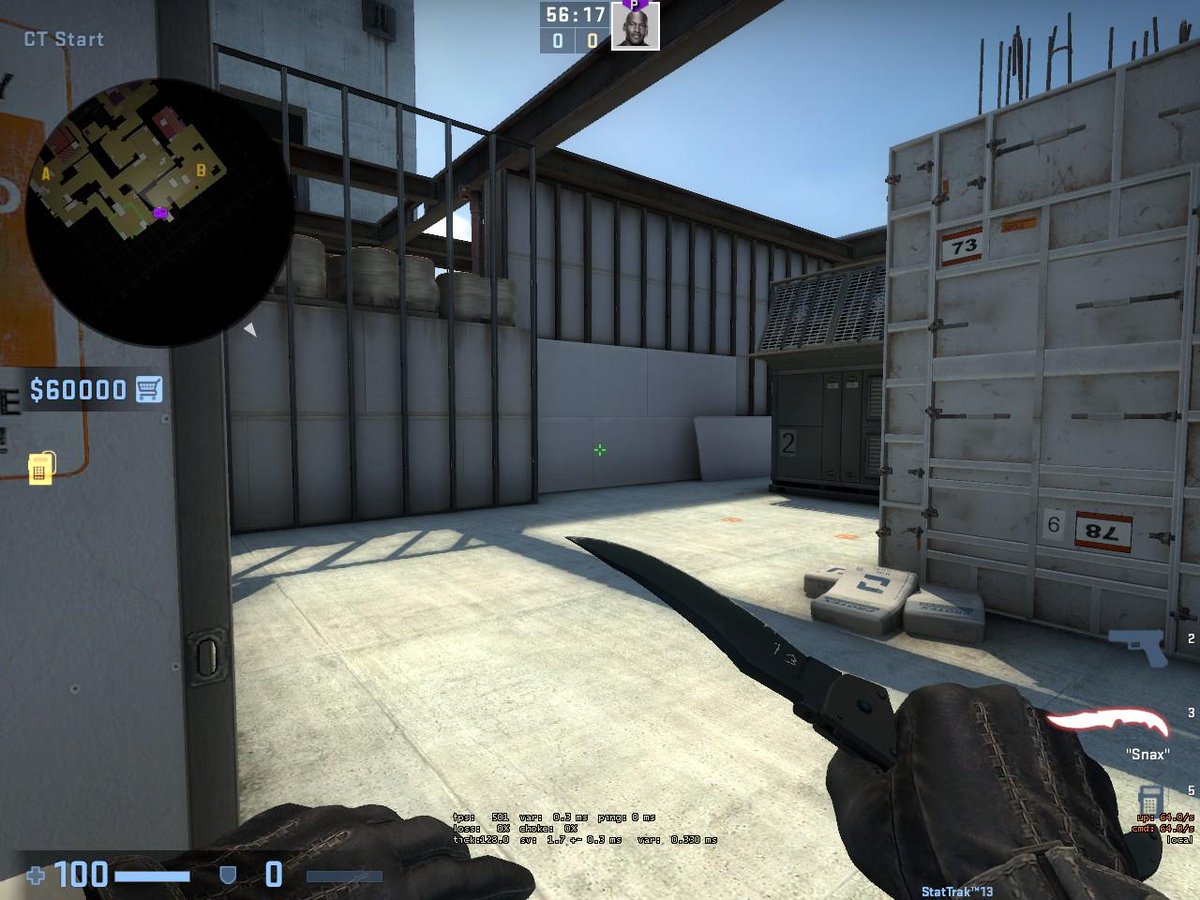
Drugs that affect the inner ear (especially antibiotics)
Signs: Usually hearing loss in both ears. It is possible to start taking the appropriate drug.
Medicines that affect the brain as a whole
Signs: Symptoms not related to movement or position change.No hearing loss or other symptoms. It is possible to start taking the appropriate drug.
Migraine
Signs: Multiple isolated bouts of dizziness or chronic dizziness, sometimes accompanied by nausea. Headache, as well as a number of other symptoms that occur with migraine, including visual or other types of aura (altered sensations that come before the headache) and sensitivity to light and or noise. Often past migraine attacks or a family history of migraines.
Middle ear infection (acute or chronic)
Signs: Earache, sometimes discharge from the ear. Unnatural appearance of the tympanic membrane (detected during examination).
Trauma (ruptured eardrum, skull fracture or concussion)
Signs: Obvious trauma in the recent past.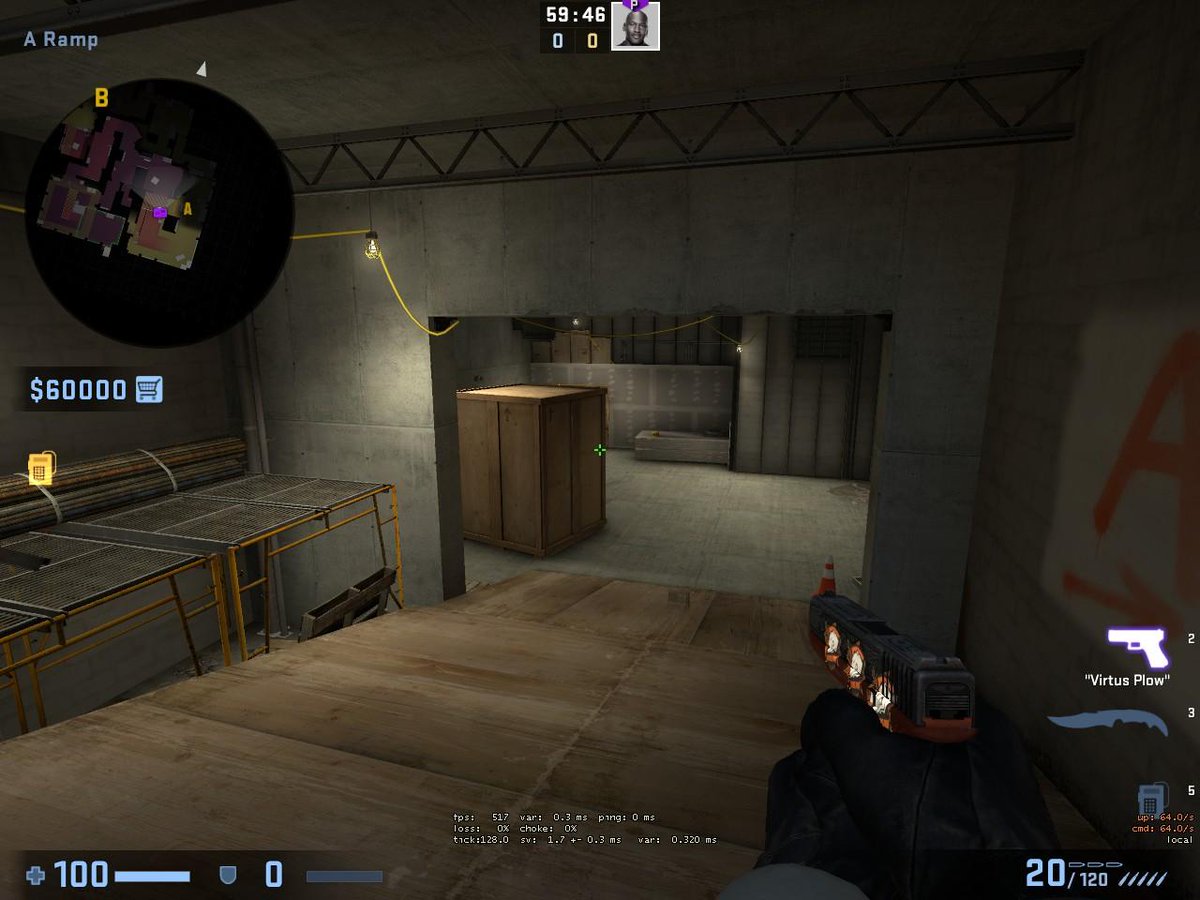
Acoustic neuroma
Signs: Slowly progressive hearing loss and ringing in one ear.Rarely, numbness and / or weakness of the facial muscles.
Bone defect around the semicircular canal
Signs: Dizziness caused by sound, loss of perception of low tones.
Brainstem stroke
Signs: Sudden onset, continuous symptoms.
Cerebellar bleeding
Signs: Sudden onset, continuous symptoms. Difficulty walking, poor coordination tests.Headache often. Symptoms get worse quickly.
Multiple sclerosis
Signs: Multiple, isolated attacks of neurological symptoms such as weakness or numbness (affects a different part of the body each time).
Low blood sugar (usually from diabetes medications)
Signs: Increased dose in the recent past. Sometimes sweating.
Low blood pressure (for heart disease, blood pressure medications, blood loss or dehydration)
Signs: Symptoms occur when lifting, not when changing head position or lying down. Symptoms usually appear as a result of an obvious cause (severe blood loss or diarrhea).
Symptoms usually appear as a result of an obvious cause (severe blood loss or diarrhea).
Pregnancy
Signs: Sometimes delayed menstruation and / or morning sickness. No symptoms of ear disease.
Thyroid diseases
Signs: Change in weight. Intolerance to heat or cold.
Dizziness on standing up – causes, examination and treatment | Symptoms
Multisystem atrophy
Signs: Muscle stiffness.Slow hesitant movements, accompanied by trembling of the limbs. Loss of coordination and balance. Urinary incontinence or inability to urinate.
Parkinson’s disease
Signs: Muscle stiffness, tremors. Slow, unsteady movements, accompanied by trembling of the limbs and shuffling gait. Difficulty walking.
Strokes (history)
Signs: In patients with known history of strokes.
Syphilis with spinal cord involvement (tabes spinal cord)
Signs: Intense, stitching, transient pain in the legs. Uncertain gait. Decreased sensitivity in the legs, numbness or tingling sensation.
Uncertain gait. Decreased sensitivity in the legs, numbness or tingling sensation.
Tumors
Signs: Back pain. Muscle weakness and decreased sensitivity in the legs.
Amyloidosis
Signs: Numbness, tingling, and weakness.
Nerve damage (with diabetes mellitus, excessive alcohol consumption or nutritional deficiencies)
Signs: Often burning pain and / or numbness in the arms and legs.Sometimes decreased muscle strength. Usually in patients with a known disorder that can cause nerve damage.
True autonomic failure
Signs: Sometimes decreased sweating and heat intolerance. Constipation or involuntary bowel movements (fecal incontinence). Difficulty urinating.
Dewatering
Signs: Thirst, decreased urine volume, and disorientation.
Severe blood loss
Signs: Usually in patients with trauma or surgery.Blood in stool or black, tarry stool.
Decreased adrenal function
Signs: Weakness and fatigue.
Chronic venous insufficiency (causing blood to accumulate in the legs)
Signs: Persistent swelling in one or both legs. Chronic moderate discomfort or aching pain in the ankles or legs, but no acute pain. Sometimes reddish-brown, hard patches on the skin and shallow ulcers, usually on the legs. Often varicose veins.
Heart failure
Signs: Shortness of breath and fatigue.
Myocardial infarction
Signs: Chest pressure or pain. Shortness of breath or fatigue. Sometimes in patients with recent myocardial infarction.
Hyperaldosteronism (for adrenal tumors)
Signs: Weakness, tingling, and muscle cramps.
Drugs for lowering blood pressure or treating angina pectoris
Signs: In patients who are prescribed one of these drugs.
Drugs acting on the central nervous system
Signs: In patients who are prescribed one of these drugs.
Sedatives (alcohol and barbiturates):
Signs: In patients who are prescribed one of these drugs.
Age-related changes in blood pressure regulation
Signs: In the elderly. No other symptoms.
Prolonged bed rest
Signs: In patients who have been on bed rest for a long time.
Low blood potassium
Signs: Muscle weakness and spasms. Tingling sensation.
Vertigo in the morning | AngioLine
Dizziness after heavy exertion or emotional stress is a normal reaction of the body.
Vertigo in the morning is not a disease in itself. This condition can be caused by pathologies of the cardiovascular system, auditory organs, diseases of a neurological nature.
In any case, before finding out the causes of dizziness, it is necessary to alleviate this condition:
- do not rise to your feet abruptly, it is better to lie down for about fifteen minutes
- exclude oxygen starvation and breathe deeply deeply
- put a cold compress on the forehead
- if chills have appeared, you need to cover yourself with a blanket or a warm blanket
- drink a glass of water
A state of dizziness after sleep can be a harbinger of such serious ailments as: heart attack; stroke; oncological diseases; atherosclerotic plaques; pathology of the nervous system, and can be easily eliminated.
The main provoking factors:
Osteochondrosis of the cervical region
The disease occurs as a result of deformation of the vertebrae and their incorrect location. This causes them to compress the artery that carries blood to the brain. At night, the sleeper unconsciously takes a pose in which the artery suffers even more. Therefore, after sleeping in the morning, the head is spinning and staggering.
Sugar
A sharp drop in blood sugar occurs due to poor nutrition.Often this condition is experienced by women who are fond of dieting or fasting.
Orthostatic hypotension
A pathological condition occurs with a sharp change in body position. This is due to the low tone of blood vessels, they do not have time to quickly adapt to changes in circumstances. Because of this, the level of blood pressure decreases. Therefore, when getting out of bed after sleep, the head is dizzy in the morning.
Malfunctions in the functioning of the vestibular apparatus, in particular, the middle ear.
Not hazardous to health. The head can be dizzy at any time, including after waking up. It can be easily corrected with timely referral to a specialist.
Intracranial hypertension
High pressure in the skull puts a very strong load on the body. With this condition, a headache is severe at any time of the day – at night, in the evening, in the morning after sleep. Pathology is dangerous enough.
Vegetovascular dystonia
The disease is associated with insufficient vascular response to signals from the central or peripheral nervous system.As a result, they have a weakened tone. The disease is especially typical for undergrowth.
Intestinal disorders, poisoning or simply toxicosis during pregnancy
After eating poor-quality or expired food, toxins accumulate in the body. This happens especially actively at night. Then there is dizziness in the morning.
This happens especially actively at night. Then there is dizziness in the morning.
Diseases of the heart
If the heart muscle does not work properly, the activity and tone of the vessels is significantly reduced.This negatively affects the blood flow, it becomes slower, sluggish. As a result, all cells of the body receive less nutrients, as well as the vital element of oxygen. This leads to the fact that the head is spinning after sleep, it is difficult for the patient to get out of bed.
Psychoneurological diseases
Daily psycho-emotional stress does not go unnoticed. Due to nervous shocks, the brain is constantly tense, working to wear and tear. This leads to the rapid depletion of reserve forces and overwork.
Anemia
Dizziness in the morning with anemia occurs due to a low hemoglobin content in the blood and insufficient nutrition of the tissues of the vestibular apparatus. Common symptoms of anemia are dizziness, nausea, fainting, unsteadiness in gait.
If severe dizziness continues in the morning on a regular basis, you should consult a doctor and undergo a comprehensive examination.
In conclusion, I would like to say that a correct lifestyle should be made the norm.
Have questions? Write to the doctor.
Vestibular disturbances (dizziness)
Dizziness is a feeling of movement of oneself or of things around.
Dizziness can be caused by various diseases – such as
benign and very dangerous to human life.About 80 reasons have been identified that can cause dizziness, of which 20% combine a number of reasons. In a healthy person, a state of balance occurs due to a combination of signals from vestibular, visual and
proprioceptive systems. The impulses that originate from the cerebral cortex reach the skeletal and eye muscles, thanks to which a stable posture and the desired position of the eyeballs are achieved. In the event that the flow of impulses from the vestibular sections into the cortex of the temporal and parietal lobes is impaired, an illusory perception of the movement of surrounding things or one’s body arises.Patients often misunderstand the concept of dizziness. Sometimes a person, experiencing a state of lightheadedness, approaching deprivation of consciousness, feelings of emptiness, “lightness in the head” perceives as dizziness, although these symptoms of an approaching fainting are combined with autonomic disorders, such as pallor of the skin, palpitations, nausea, blurred eyes, hyperhidrosis (sweating).
In the event that the flow of impulses from the vestibular sections into the cortex of the temporal and parietal lobes is impaired, an illusory perception of the movement of surrounding things or one’s body arises.Patients often misunderstand the concept of dizziness. Sometimes a person, experiencing a state of lightheadedness, approaching deprivation of consciousness, feelings of emptiness, “lightness in the head” perceives as dizziness, although these symptoms of an approaching fainting are combined with autonomic disorders, such as pallor of the skin, palpitations, nausea, blurred eyes, hyperhidrosis (sweating).
A similar condition can be caused by cardiovascular disease,
orthostatic hypotension, hypoglycemia, anemia, high myopia.
Often, under dizziness, patients mean imbalance, that is, instability, staggering when walking. Such disorders can occur after organic damage to the nervous system and, of course, are not dizziness.
Types of dizziness.
The following types of dizziness are distinguished:
- Psychogenic dizziness. Appears after strong emotional distress or severe fatigue.At the same time, a person feels a vague feeling of instability, a lack of clarity in the head, and weakness. Some mental syndromes – hysteria, depersonalization, anxiety with panic attacks – can become pathological conditions that are accompanied by dizziness.
- Dizziness with cerebral disturbances usually occurs due to pathologies of the cerebellum. It can be a tumor, displacement of the cerebellum with hydrocephalus, trauma to the skull or cervical spine, vascular disorders of the brain.Sudden dizziness can signal cerebellar infarction; this is due to hemorrhage in the cerebellum if the patient is conscious. The defeat of the autonomic nuclei, which are located under the cerebral hemispheres, is the second important cause of dizziness in brain disorders. This may be due to inflammatory or vascular lesions, or from chemical or drug poisoning.
 These drugs include barbiturates and anticonvulsants, which cause drowsiness and dizziness.Excessive intake of streptomycin leads to irreversible brain damage.
These drugs include barbiturates and anticonvulsants, which cause drowsiness and dizziness.Excessive intake of streptomycin leads to irreversible brain damage. - Dizziness of the ocular nature occurs in healthy people due to unusual visual stimulation (for example, rapid movement of objects or at height). The cause may also be the pathology of the eye muscles, that is, paralysis, which leads to a violation of the projection of objects on the retina and the “compilation” of an incorrect picture in the brain.
- Dizziness in case of ear pathology is possible due to damage to various structures: the vestibular apparatus, nerves and blood vessels, or the Eustachian tube (connecting the ear cavity with the nasal cavity).Dizziness associated with hearing loss, pain or tinnitus, or dizziness in a certain position of the head may occur depending on the location of the lesion. The most common cause of dizziness can be a sulfur plug in the ear canal.

Causes of dizziness.
There are many causes of dizziness. It can appear as a result of damage to the inner ear or vestibular nerve.This vertigo is called peripheral vertigo .
Various diseases of the brain can also cause dizziness, then it is called central dizziness .
By the symptoms of dizziness and its nature, by the frequency and duration of attacks, you can determine the real cause of dizziness: if there is any discharge from the ear, hearing impairment, this indicates an inflammation of the inner ear and requires conservative treatment.If dizziness is accompanied by tinnitus, nausea, vomiting, hearing impairment, then this indicates the presence of Meniere’s syndrome . If the auditory function is not impaired, then this may indicate signs of vestibular neuritis . Neuritis is manifested by sudden dizziness, systematic vomiting; when trying to get out of bed, the feeling of rotation increases, as well as when the head rotates. These symptoms disappear gradually within two to three days from the onset of the disease.In the case of sudden unilateral deafness, tinnitus and vomiting, more than half of patients have perilymphatic fistula . In other cases, the fistula can be expressed to varying degrees by dizziness and hearing impairment (noise, ringing in the ears, hearing impairment). In the case of unilateral hearing loss and dizziness, it is worth checking for a brain tumor. Such dizziness manifests itself gradually, often accompanied by a slowly growing headache, and intensifies at certain positions of the body.If dizziness occurs after a head or spine injury, the cause may be head jerking or head injury.
These symptoms disappear gradually within two to three days from the onset of the disease.In the case of sudden unilateral deafness, tinnitus and vomiting, more than half of patients have perilymphatic fistula . In other cases, the fistula can be expressed to varying degrees by dizziness and hearing impairment (noise, ringing in the ears, hearing impairment). In the case of unilateral hearing loss and dizziness, it is worth checking for a brain tumor. Such dizziness manifests itself gradually, often accompanied by a slowly growing headache, and intensifies at certain positions of the body.If dizziness occurs after a head or spine injury, the cause may be head jerking or head injury.
90,000 Dizziness – (Clinic Di Center)
Dizziness
Dizziness indicates a mismatch of information coming from three systems responsible for orientation in the surrounding space: vestibular, visual and tactile.
What it is?
Most often, dizziness is spoken of as an “illusion of movement”, that is, dizziness is an incorrect awareness of body position and movement. Surely every person in his life has encountered dizziness. You may have experienced it as a child, after a few extra laps on attractions, or on an airplane, or after spending too much time with friends on holidays. Dizziness can occur at any age.If your head is spinning for no apparent reason and not for the first time, then you should try to find the cause of this disorder.
Why does this happen?
Dizziness indicates a mismatch of information coming from our three physiological systems responsible for orientation in the surrounding space: vestibular, visual and tactile.
There are many reasons for dizziness. For example, if dizziness occurs when you try to stand up or turn around and then gradually subside, then this may be a manifestation of autonomic dysfunction (vegetative-vascular, neurocirculatory dystonia).
When dizziness is accompanied by hearing loss, noise and ringing in the ears, and at the same time you have a cold, this suggests that you may have an inflammatory ear disease – otitis media. One of the common causes of dizziness and imbalance is dropsy of the inner ear or hydrops.
Long ago, back in the 19th century, disorders in the form of dizziness, deafness, tinnitus accompanying migraines were reported. Moreover, people suffering from migraine, much more often than everyone else, suffer from dizziness, which exists outside of headache attacks.this condition is also defined as “migraine without headache” or “headless migraine”.
With brain tumors, persistent dizziness is accompanied by increasing headaches. And an acute circulatory disorder, for example, a stroke, can, in addition to dizziness, be accompanied by a number of symptoms: speech impairment, weakness and impaired movement in the legs or arms, loss of consciousness.
Many people are familiar with the dizziness that occurs with sudden, sudden movements after prolonged sedentary work.It is accompanied by pain and tension in the muscles of the neck and is often found in untrained people who spend most of their time in a sitting position. The reason for this dizziness is a violation of the blood supply to the ear and parts of the brain that are responsible for the orientation of the body in space, as a result of overstrain of the neck muscles. Similar sensations can be experienced by people who have suffered an injury to the cervical spine.
Dizziness can be caused by certain medications, such as antibiotics or high blood pressure medications, especially if they are overdosed.
Finally, many who had to travel by air, sea, automobile and other transport, at least once experienced during the trip symptoms of motion sickness, or motion sickness. Currently, there is a fairly wide selection of drugs to relieve these unpleasant sensations.
Mention should also be made of the phenomenon of agoraphobia. This is a fear of open space syndrome, especially with a large number of people. In people with this disease, dizziness often occurs when they are in crowded places, and in severe cases, even if they need to leave the house.
Diagnostics
If you experience frequent dizziness, you need to start with a visit to a neurologist, and then contact an otolaryngologist. At the same time, you will be offered to undergo vestibular tests (caloric test, rotational tests), as well as posturography – a study of the interaction of the visual, vestibular and muscular systems while maintaining balance. To diagnose a possible disease of the hearing aid, you may need tone threshold audiometry, acoustic impedance measurement; to find out the condition of the vessels – ultrasound scanning or computed tomography.
Treatment
If you are suddenly struck by an attack of dizziness, try to calm down, do not panic. Sit down, try to focus your gaze on a specific object and not close your eyes. If dizziness is accompanied by unpleasant, painful sensations that were not there before (numbness of the arms or legs, speech impairment, severe pain in the abdomen, chest), you should immediately call a doctor.
Sit down, try to focus your gaze on a specific object and not close your eyes. If dizziness is accompanied by unpleasant, painful sensations that were not there before (numbness of the arms or legs, speech impairment, severe pain in the abdomen, chest), you should immediately call a doctor.
Treatment of systematic vertigo is to combat its cause; treatment in each case is prescribed by the attending physician.
Dizziness
Dizziness is a symptom that can develop due to a variety of diseases, and its causes often reflect disturbances that cannot be assumed by a person who does not know the mechanisms of complex functioning between the nervous and vestibular systems.
Causes of dizziness:
- Dropsy of the inner ear , which is a change in the physicochemical characteristics of the internal media of the ear, and its consequence is an increase in pressure in the inner ear, and there may be no hearing impairment.
 It often occurs with head injuries, chronic vascular diseases, variants of biomechanical disorders of the spine. It is necessary to look for the reason precisely in the violation of the reaction from the inner ear.
It often occurs with head injuries, chronic vascular diseases, variants of biomechanical disorders of the spine. It is necessary to look for the reason precisely in the violation of the reaction from the inner ear. - Benign positional paroxysmal dizziness , in which the patient is disturbed by short-term attacks of dizziness arising from a change in head position. It is quite easy to diagnose and treat it on an outpatient basis.
- Migraine . Dizziness attacks can either precede the appearance of a headache or accompany it. In this case, the doctor prescribes therapy aimed at preventing seizures, headaches and dizziness.
- Neurotic Disorders , which often appear in menopause. At the same time, dizziness is often combined with a headache, a feeling of numbness in the hands, attacks of palpitations, sweating, bloating in the abdomen, episodes of intolerance to stuffiness, as well as mood swings in the form of causeless anxiety, irritability, sleep disturbances, decreased concentration, fatigue.





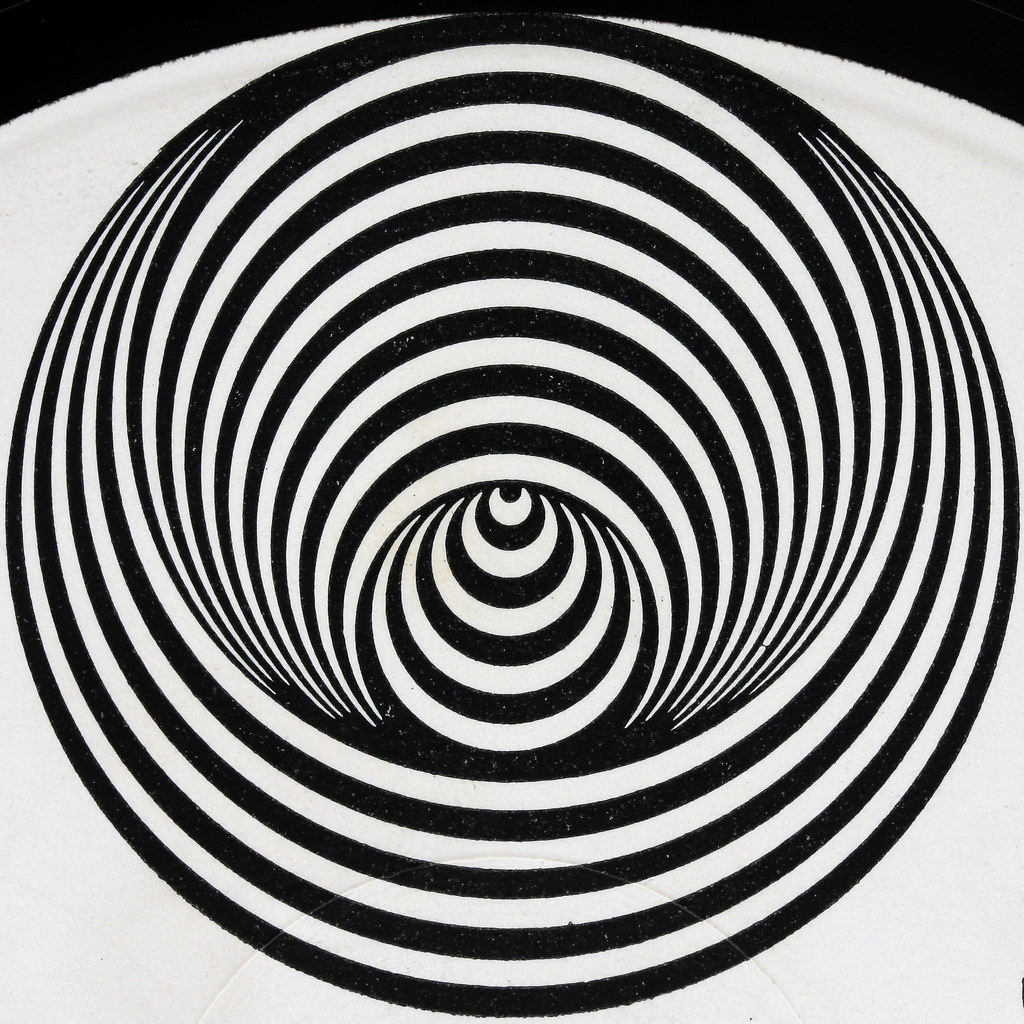

 These are all symptoms of a stroke – a brain disorder.
These are all symptoms of a stroke – a brain disorder. These drugs include barbiturates and anticonvulsants, which cause drowsiness and dizziness.Excessive intake of streptomycin leads to irreversible brain damage.
These drugs include barbiturates and anticonvulsants, which cause drowsiness and dizziness.Excessive intake of streptomycin leads to irreversible brain damage.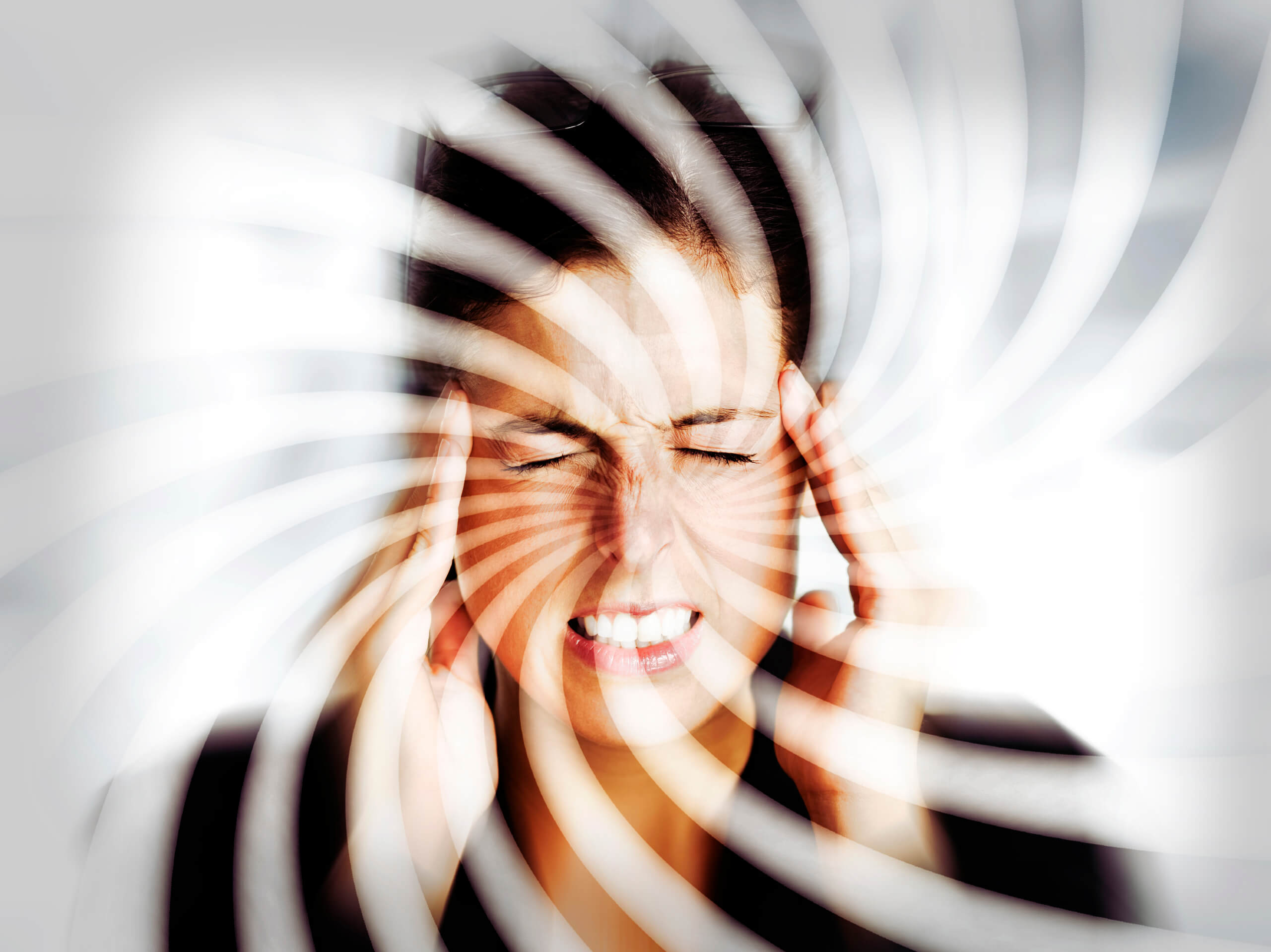
 It often occurs with head injuries, chronic vascular diseases, variants of biomechanical disorders of the spine. It is necessary to look for the reason precisely in the violation of the reaction from the inner ear.
It often occurs with head injuries, chronic vascular diseases, variants of biomechanical disorders of the spine. It is necessary to look for the reason precisely in the violation of the reaction from the inner ear.